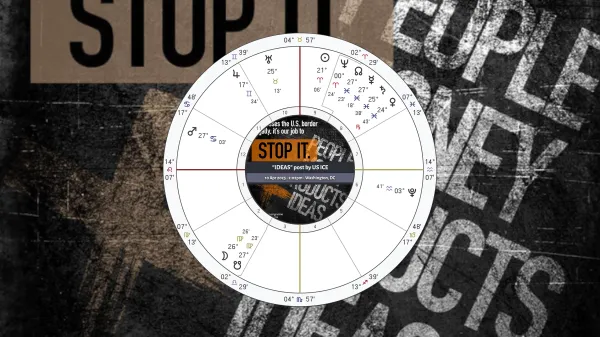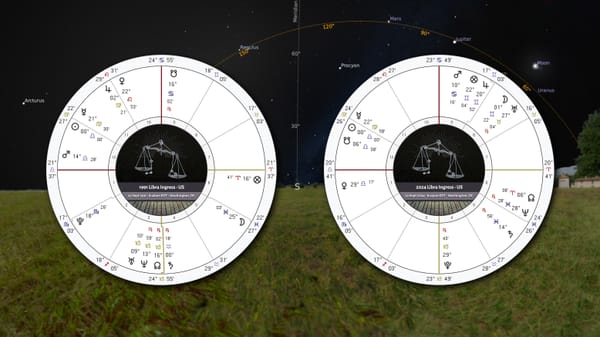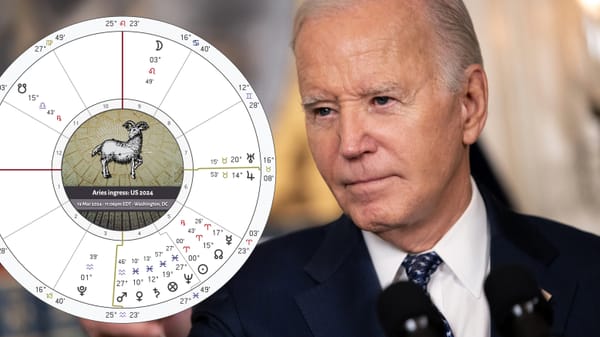Saturn in Pisces & the crisis of a failing model
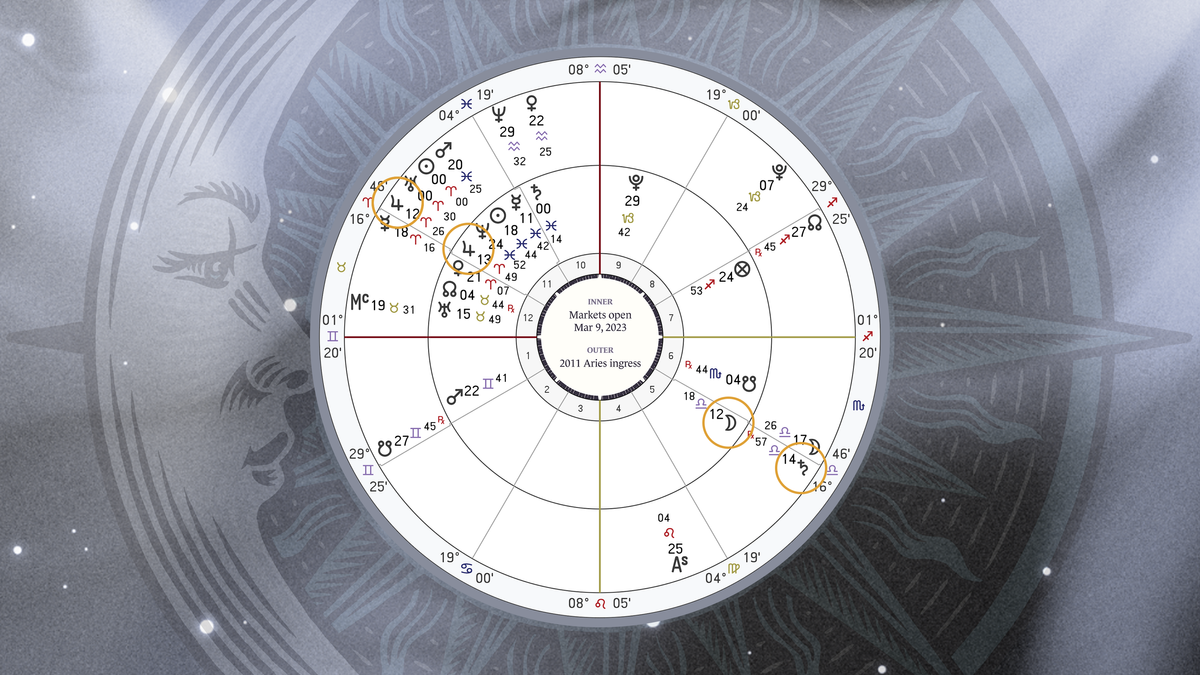
Two days ago, I shared a technical analysis of the drivers behind the largest US bank closure since the 2008 financial crash. Silicon Valley Bank's stock prices tumbled as the markets opened on the opposition of the Moon (12° Libra) to Jupiter (13° Aries). The Moon opposes Jupiter once a month. What made this particular instance so powerful was a source from which it drew: the opposition of Saturn (14° Libra, Rx) and Jupiter (12° Aries) present in the 2011 Aries ingress, the year in which Greg Becker acceded to SVB's CEO position. Becker would come to oversee the firm until its dramatic closure on March 10, 2023.
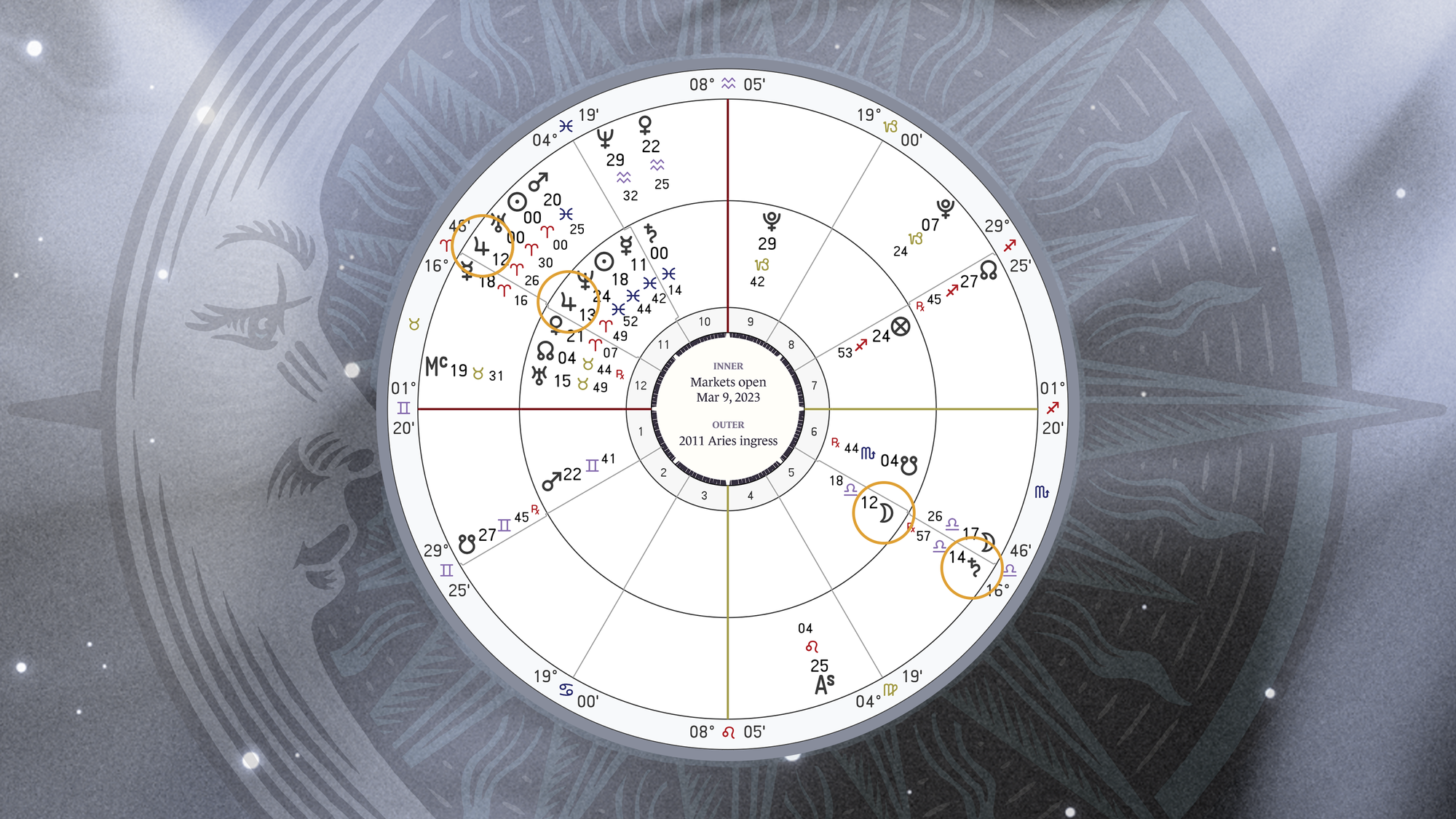
Jupiter's role in the above moments is crucial and not to be overlooked: the shock we are experiencing is a crisis of confidence, the same death knell that took down global financial markets in 2007/2008, and ignited the fear and panic precipitating the Great Depression in the 1930s.
Each of the seven visible planets plays a role in creating and destroying ideas, philosophies, and the organic world of living and inanimate things. Jupiter's job is to promote growth, liberality, good faith, meaning, and well-being. Dramatic celestial events involving Jupiter draw out people, places, and institutions vulnerable to a failure of trust. The lunar opposition to Jupiter on March 9, 2023, was one such event – one that zeroed in on Silicon Valley Bank and its chief executive at a time of volatile market conditions, as highlighted in the following bi-wheel:
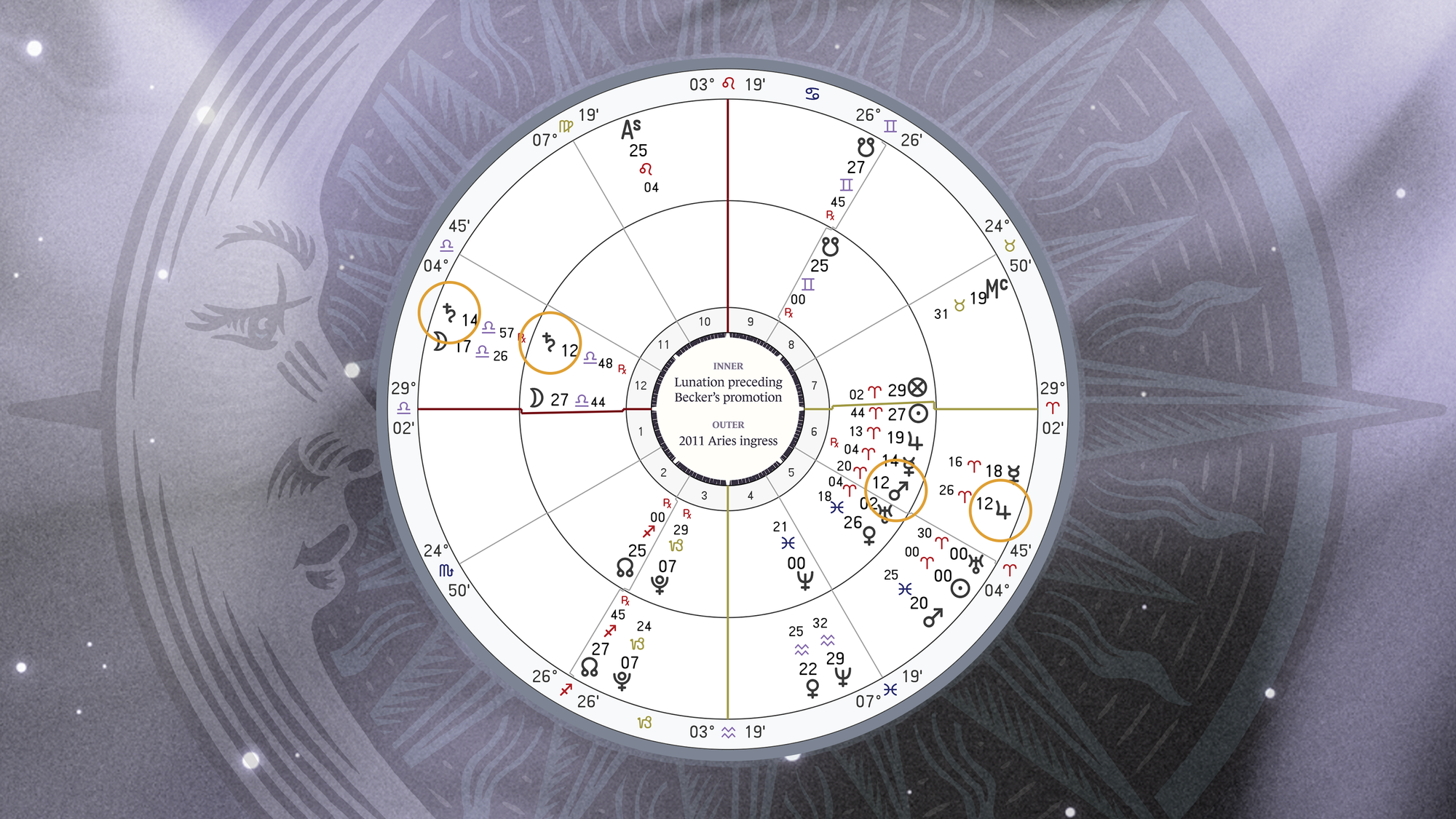
A common signature of Jupiter's involvement in a problem is its tendency to lead even the most rationally-minded to presume optimism is sufficient. To the chronically Jupiterian, hope is a strategy, magical thinking is a life philosophy, and past good fortune always precedes even rosier futures.
Without getting technical, far too many plays were borrowed from the unscrupulous activities that led to the 2007/2008 financial crash – big bank financial plays that we should've learned from the first time around. Jupiter, active in 2007/2008 as it was in SVB's collapse, puffs things up beyond sustainable limits. It tempts you to push boundaries using the language of growth and the illusion of comfort – in the end, you're left with just enough rope to hang yourself with, waiting for the moment when your creation implodes under its own crushing weight.
After the last global financial crash, Congress passed the Dodd-Frank Wall Street Reform and Consumer Protection Act. This act contained measures to protect the American public from another systemic collapse. One such protection was an asset cap: banks were considered "too big to fail" if their asset base met or exceeded $50B, which would then subject that institution to a whole host of additional regulatory measures meant to bolster consumer confidence in big banking.
But in 2018, Trump signed into law the Economic Growth, Regulatory Relief and Consumer Protection Act. This bill raised the asset cap from $50B to $250B (i.e., "regulatory relief"), but failed to ensure banks had the infrastructure necessary to be good stewards of assets 5x their previous maximum.
We need to look the new Moon that preceded the enacting of EGRRCPA, because it draws a straight line to the astrology of Becker's promotion, and identifies SVB's response to these new limits set by EGRRCPA as Becker's own downfall.
My style of mundane analysis treats new and full Moon charts as seriously and with as much precision as nativities. New and full Moons (what I will call 'lunations') are exact alignments between the two luminaries: the new Moon brings these two bodies together (the conjunction), the full Moon sets them on opposite sides of the Earth (the opposition). A new or full Moon perfects in our skies every other week.
For year-long prognostics, astrologers use the Aries ingress; this provides the solar perspective. But within that timeframe, when the conjunction or opposition between the Sun and Moon becomes exact, a new 2-week chapter opens in human history that comes with its own headline plot, subplots, strengths and vulnerabilities, transparencies and secrets. This is the lunar perspective (hence 'lunation').
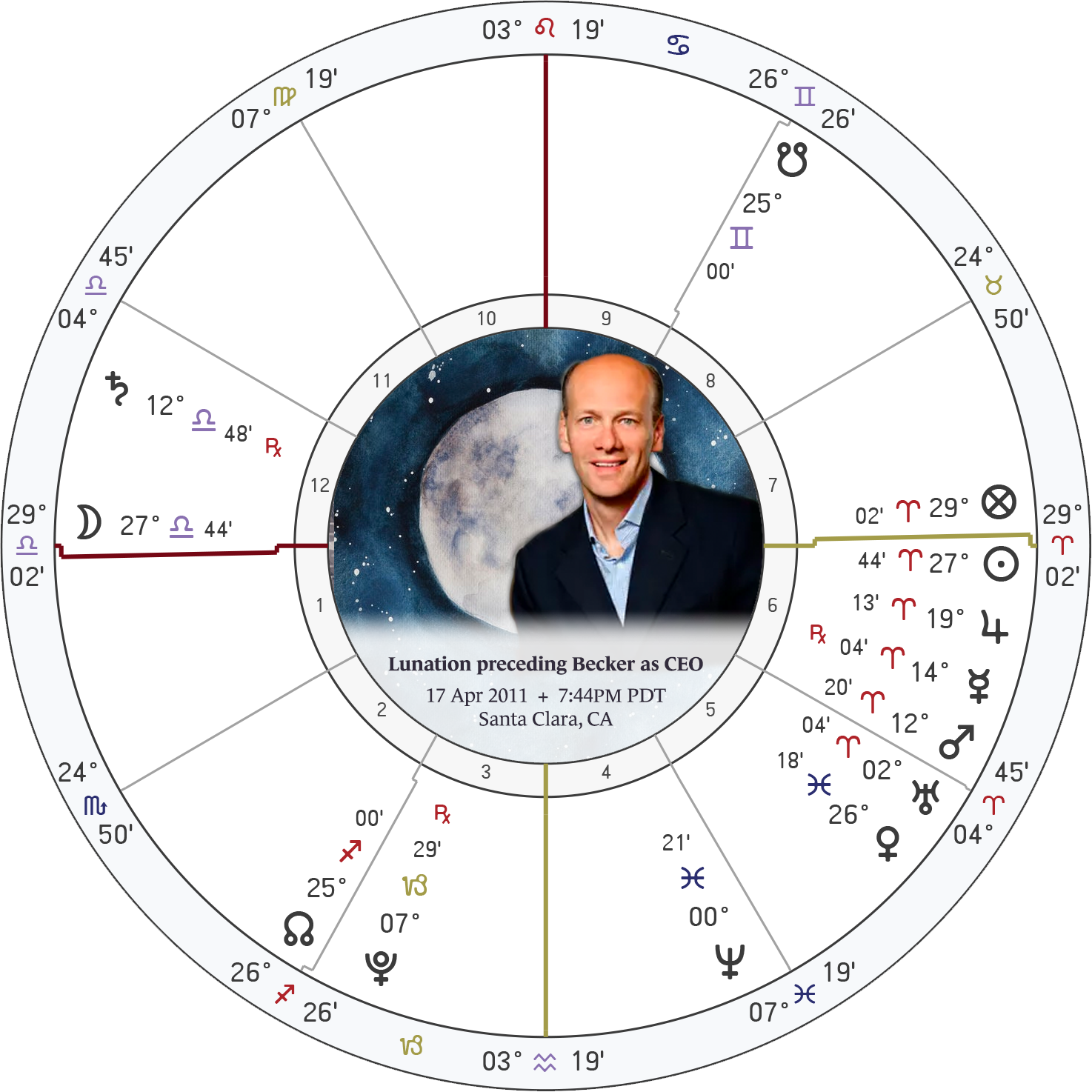
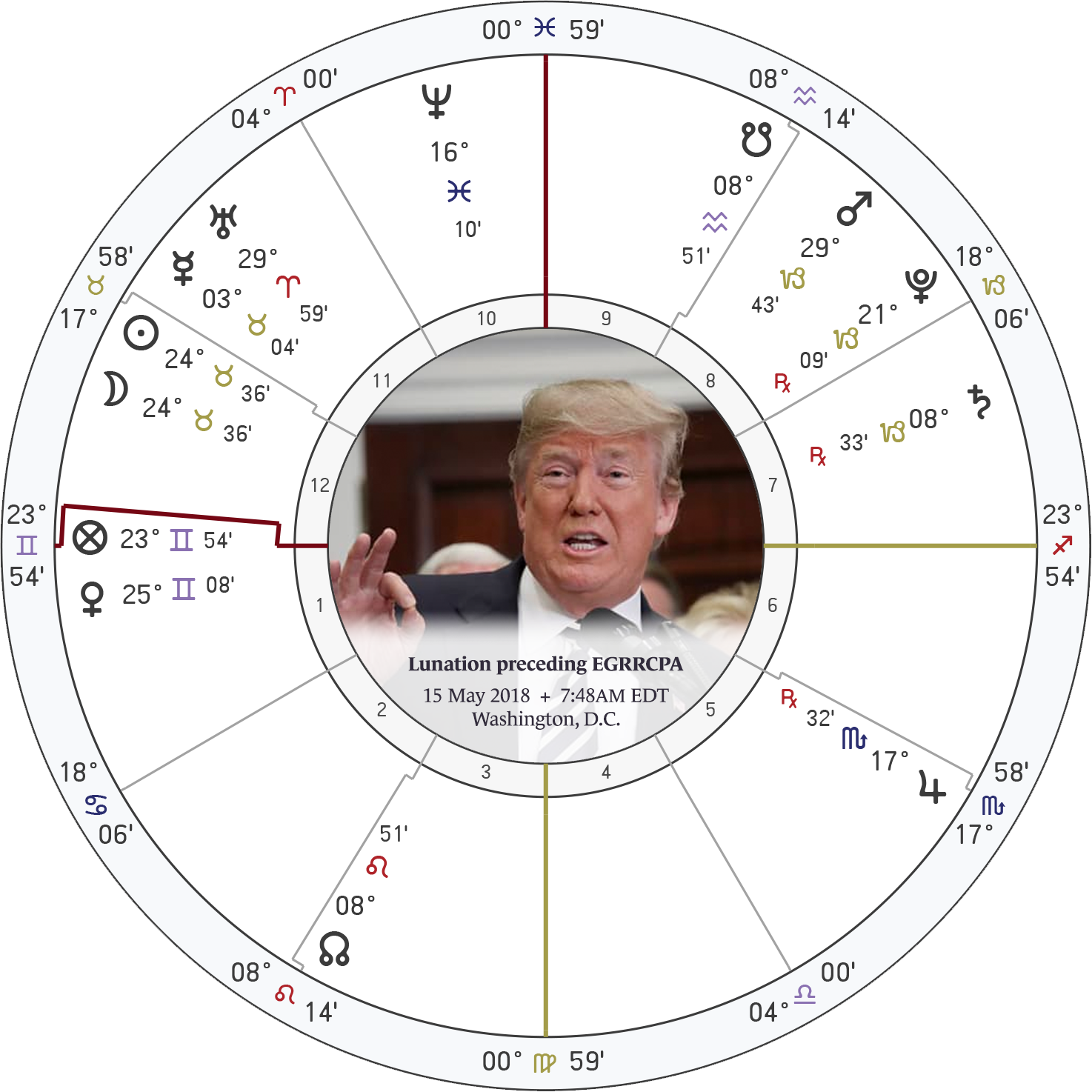
Two lunations – left, preceding Becker's promotion; right, preceding Trump's enacting of EGRRCPA.
It was a full Moon that preceded Becker's promotion. Mars, ruler of the 2nd house of wealth and economic stability, opposed restrictive and punishing Saturn in the 12th house. Considering the visible planets only, this opposition is one of the least fortunate configurations known to astrologers; perhaps only the conjunction of Saturn and Mars, or the eclipse, could signal greater risk of harm.
But Saturn and Mars are not alone in their standoff. Mercury interjects in the sordid ordeal, and through Mercury the nature of the threat is shown. Mercury rules the 9th house, and so represents legal matters in this full Moon chart. Retrograde, this Mercury describes a reversal of previous provisions. Note the South Node (regressions, mistakes, where we fall back on bad practices) conjoined the 9th cusp of legislation and regulation, i.e., legal permission to do an irresponsible thing threatens serious, regrettable damage.
The 8th house of any chart shows anxiety and distress, debts and financial waste – it heralds the beginning of death, both its cause and nature, and marks where our loss stands to become someone else's gain. That part of Becker's full Moon chart is occupied by 24° Taurus (conjunct Algol). Notice that the lunation preceding the roll-back of Dodd-Frank regulations was a new Moon at – you guessed it – 24° Taurus. The relaxed regulatory guidelines were a death trap for Becker and the institution he governed. Mirroring themes between each other, both lunations feature South Node in a near exact conjunction with the 9th house cusp: mistakes breeding mistakes.
The astrology confirmed how the market response to SVB's financial position was a 'chickens coming home to roost' scenario for Trump's Dodd-Frank roll-back:
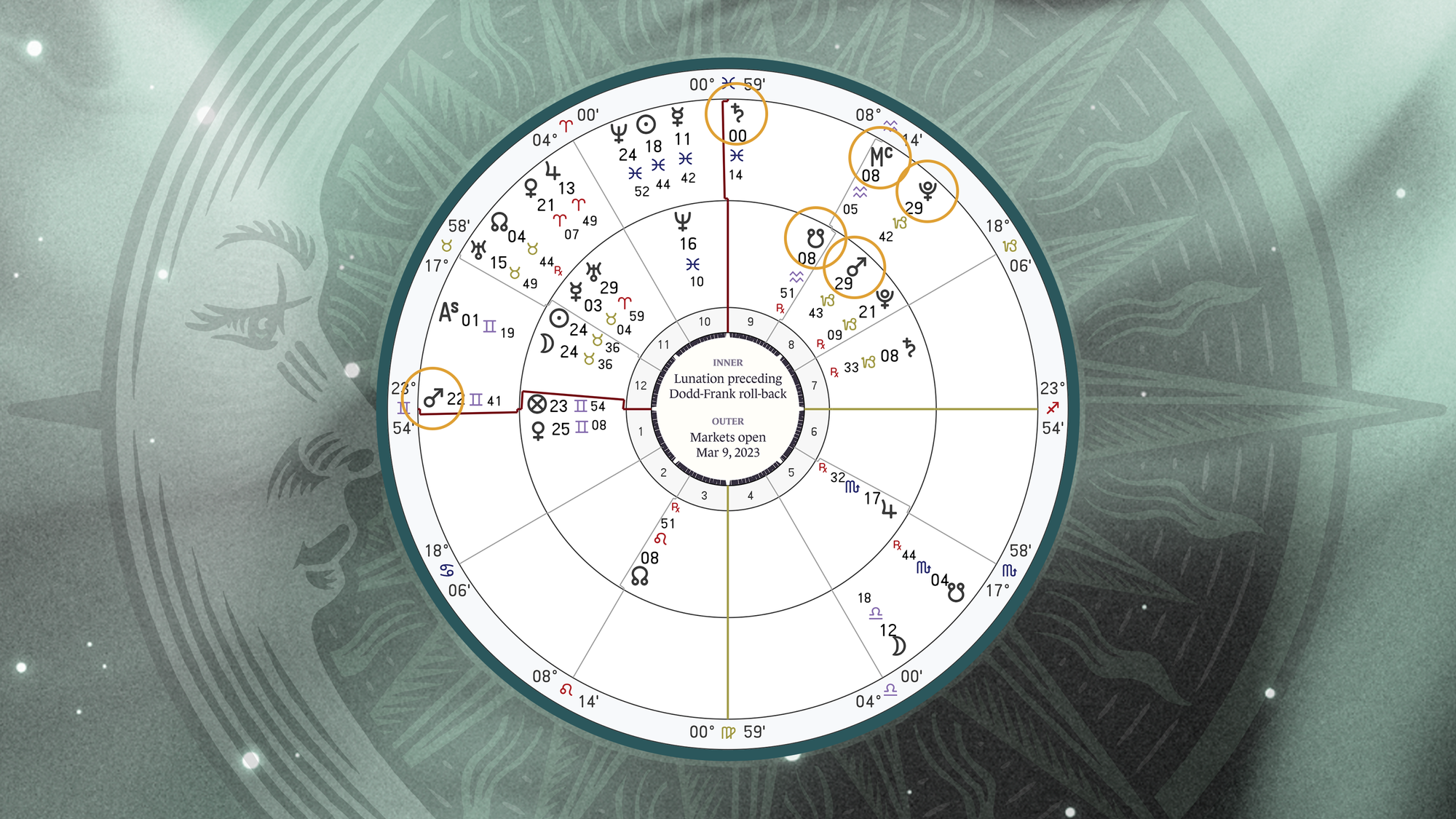
- Transiting (i.e., real-time) Saturn at 0° Pisces crossed the Dodd-Frank roll-back's midheaven, exact by degree. Saturn is the reckoner, the toll-collector, the planet that forces atonement in its own time (rarely convenient). Heavy burdens of responsibility, damage to reputation and confidence, a threat of failure and systemic collapse: these are common themes when Saturn transits a midheaven.
- Transiting Mars at 22° Gemini was applying to conjoin the Dodd-Frank roll-back's ascendant, just over a degree distant from exact conjunction. Mars's two Moons are named after the god of war's two carriage horses: Phobos and Deimos, translated out of the Greek as Fear and Panic. This Mars is a return of the United States' natal Mars (21° Gemini), and this passage frequently introduces severe crises in American life.
NB – The angles of this chart are almost identical to the 2022 Aries ingress, which means transiting Saturn and Mars are also conjoined that chart's angles. We are in the final days of this moment's dispensation. - Pluto transits over the Dodd-Frank roll-back's Mars. Pluto, whose name comes from the Greek ploutos meaning 'wealth', is preparing for its impending exit from Capricorn into the air sign Aquarius a few days from now. When Pluto trailed the final degrees of Sagittarius in 2008, we watched banks fall one by one. Now as it exits Capricorn, it exposes the unsightly underbelly of our financial institutions, and, conjoining Mars in a cardinal sign, does so with unparalleled speed and finality.
- The transiting midheaven (or, degree culminating overhead) fell upon the Dodd-Frank roll-back's South Node, both at 8° Aquarius. Mistakes, falls from grace, the merciless purging that follows greedy surfeit: these are the promised gifts of this conjunction. To compound things, the United States' natal South Node is found there too, at 6° Aquarius.
To see this many near-perfect alignments is, in a word, unusual, if not outright stunning. And to see them each stem from planets known for doling out destruction only reinforces how seriously we ought to be taking the cosmic hint.
Saturn in Jupiter's sign of Pisces: time to question the model
Each year, astral omens are taken from the Sun's northerly crossing over the earth's equator (astrologers call this the 'Aries ingress'). The exact moment of alignment marks the vernal equinox, or the beginning of spring in the northern hemisphere, celebrated in March each year. The auspices of 2011 featured Jupiter antagonized by the opposition of a retrograde Saturn. Saturn represents the skeletal foundation around which the rest of life develops. The slowest and final planet visible to the naked eye, Saturn's role in nature is to impart structure as matter undergoes metamorphosis to become form. When retrograde, cracks in Saturn's foundation are exposed.
If Saturn is the structure, Jupiter is the way meaning flows within that structure. With these two in opposition, the principles of growth and foundations are set at cross-purposes: growth within the structure damages the structure, pushing it to its limit. SVB's problems were seeded in 2011 on the opposition of Jupiter (12° Aries) and Saturn (14° Libra, Rx), and events came to fruition when fully ripened at the Moon's opposition to Jupiter on March 9.
What we have is the image of a broken model: life isn't flowing in this structure the way it needs to. We've been here before, and the solutions forced upon us by careless legislators aren't protecting us.
The social contract has long been overdue for an update. A new ethos is emerging, and Saturn's ingress into Pisces is going to open up new questions about how sensible some of our existing solutions are.
For instance, does it still make sense for the FDIC to cap their insurance at $250K per account? Medium-sized businesses often hold cash on hand in excess of these values; it only benefits banks (through fee assessments) to ask individuals and businesses to keep their funds in multiple accounts.
Does it really make sense that private interest institutions (like banks) can grow to become indispensable kingpins in global or regional economies? When is too big itself a systemic risk, like a tumor that's too dangerous to correct or remove without introducing a whole host of new existential threats?
Companies and institutions that need to be bailed out by the government when they fail, should be owned by the government.
— Halli (@iamharaldur) March 10, 2023
You can’t privatize the profit and socialize the losses.
It isn't necessary to translate our current crisis into a call to socialize banking; but it is a call from reality to admit that what we're doing isn't working.
Where we're at now
We've yet to see all the FDIC and Treasury will do to protect good-faith depositors, although the Fed has said it will support SVB's customers (who, without government intervention, stand to lose 95-98% of their deposited capital). This crisis could still easily grow to have disastrous knock-on effects touching every sector of American life. Everyday entrepreneurs are hit hardest by this, whether they bank with SVB or rely on SVB somewhere along their supply chain, as demonstrated by this anecdote from Strongsuit founder Lindsey Michaelides:
Hi, I’m Lindsey. A bit about me:
— Lindsey Michaelides (@lcmichaelides) March 11, 2023
- Ohio mother of 4
- I employ a team of 15 as a start-up founder & CEO of Strongsuit
- drive a used Honda Odessey
- husband works in manufacturing
- The financial future of my company, team and family are at risk w/ the collapse of SVB (1/23)
Or this account from HR entrepreneur Alexander Torrengra:
Silicon Valley Bank was the main bank for two of our companies, my personal savings, and my mortgage. This is how things unfolded for us:
— Alexander Torrenegra (@torrenegra) March 11, 2023
Between 2013 and 2023, all good.
Thursday, 9 AM: in one chat with 200+ tech founders (most in the Bay Area), questions about SVB start to… https://t.co/RAB1XvslPE
What we have here is a first taste of Saturn in Pisces: a crisis (Saturn) in confidence (Pisces, a Jupiter-ruled sign); a reckoning (Saturn) for unstable institutions (Pisces); a broad and indiscriminate dissemination (Pisces) of repercussions (Saturn). If you've been waiting to see what Saturn is Pisces is all about, consider this event the forerunner.
Thankfully, we have an opportunity over the next few weeks to address what's broken – an astrological call-to-action, as it were. I am watching, specifically, the full Moon of April 6. On that date, the Sun will be at 16° Aries, the Moon at 16° Libra, zodiacal hot-zones already shown to be strongly resonant with SVB's collapse. Mars will be at 5° Cancer, exactly conjoined the United States' natal Jupiter; this aspect attended the Lehman Brothers closure, and is as likely to bring sharp burns as it is to identify quickly residual problems in the system. And, perhaps most optimistically, the palliative planet Venus will occupy 24° Taurus, that problematic degree from Becker's CEO chart and the Dodd-Frank roll-back. Legislators on both sides of the aisle should strive to take advantage of the productive astrology this period provides.
This won't be our only opportunity to reverse course. Later this summer, Jupiter and Saturn have a softer meeting of the minds than we've seen in these charts; there's room in these signatures for legislative revision of the Dodd-Frank roll-backs. More on this another time.
In future issues of this newsletter, I'll be sharing findings on the 2007/2008 financial crash, and how they might better inform our future positioning. For now, all eyes on the human cost piling up after the gross mismanagement of global capital recently displayed at SVB.

